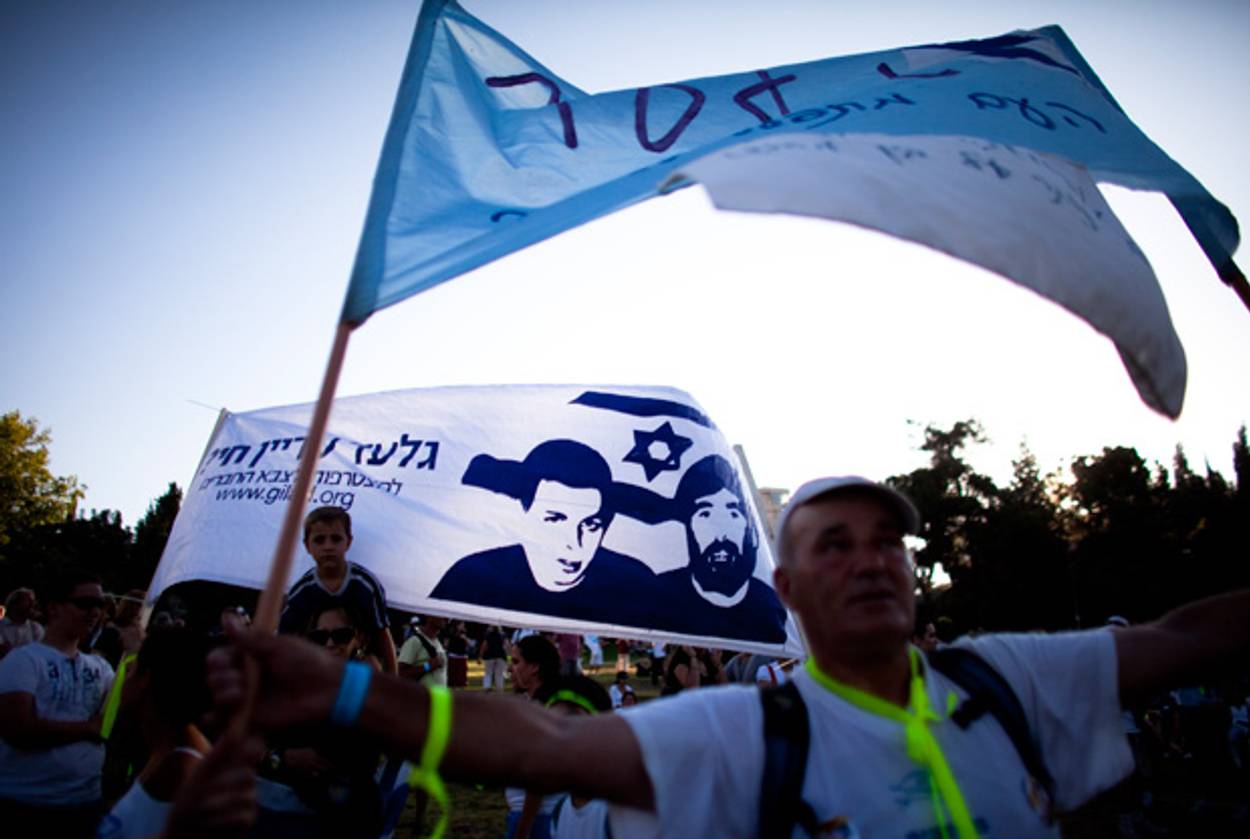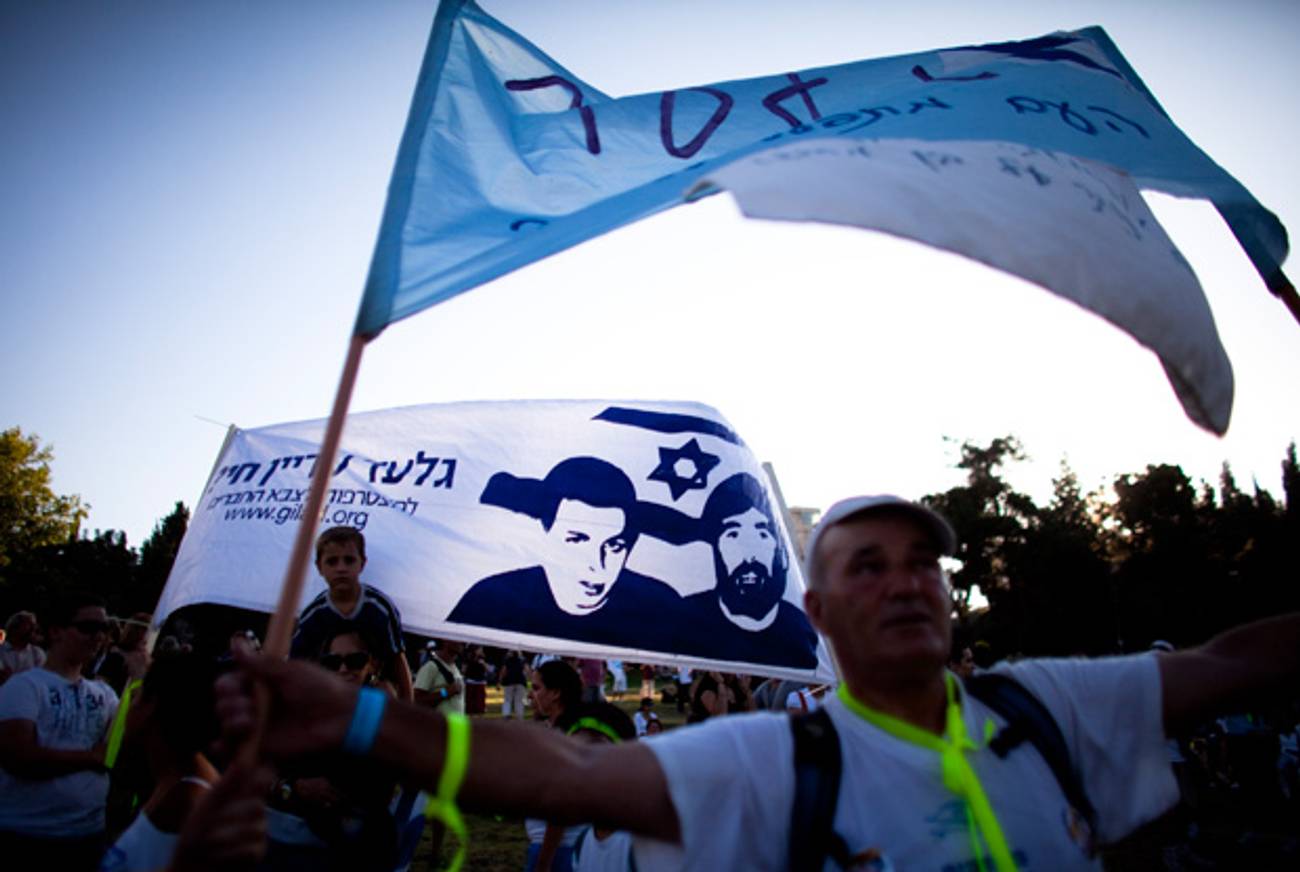Moving On
The movement to free Gilad Shalit, the long-captive IDF soldier soon coming home, was a necessary precursor to this summer’s protests in Israel




According to Israel Defense Forces statistics, 1,273 Israeli soldiers have fallen captive since the 1948 War of Independence, and nearly every one of Israel’s armed conflicts was followed by some sort of prisoner exchange. Never before the capture of then-19-year-old Gilad Shalit in 2006, however, had any one soldier become the focus of the kind of massive grassroots effort, one that swept across party lines and operated in open defiance of the government.
Rather than follow the same script as scores of anxious parents before them, Aviva and Noam Shalit refused to assume a passive role and let the government’s leaders negotiate for Gilad’s freedom. Instead, they camped across the street from Prime Minister Benjamin Netanyahu’s house, drawing streams of supporters and publicly questioning the government’s every move. Led by Shalit’s parents, the movement organized marches and demonstrations that drew previously unprecedented crowds, convinced some of the country’s top musical artists to record songs demanding Shalit’s release, and distributed symbolic yellow ribbons that soon became ubiquitous. Considering the contentious political assertion at the heart of their campaign—the demand to free hundreds of Palestinian militiamen, some guilty of murder, in return for Shalit, a moral dilemma that had traditionally divided Israelis—their success is nothing short of astonishing.
Nothing about the smiling, scrawny young man in the pictures hanging across Israel suggests a particularly powerful symbolic presence. Which, perhaps, is the whole point of Gilad Shalit. For the most part, previous Israeli prisoners of war belonged to several distinct categories. Some, like Ron Arad—the air force navigator who was captured in Lebanon in 1986—were career soldiers, the sort of men for whom captivity, presumably, was an occupational hazard. Others, like Ehud Goldwasser and Eldad Regev, whose capture by Hezbollah in 2006 sparked the Second Lebanon War, were reservists, older men with families and careers. Others still were captured en masse. But Shalit was very young and all alone, an ordinary boy who was nabbed by the enemy less than a year after putting on uniform. He was, in other words, an everyman.
As such, there was no end to the energy Israelis were ready to invest in seeing Shalit return home. Unlike, say, Natan Sharansky, another famed ideological prisoner who became a symbol in Israel, Shalit represented nothing but himself, which is to say an ordinary Israeli living under extremely difficult conditions and wanting nothing more than a quiet, peaceful, dignified life. Few Israelis could imagine life under Soviet repression, but every Israeli who had ever served in the army—the vast majority of Israelis—could imagine the nightmarish scenario of a patrol gone horribly wrong, ending in years of imprisonment. This is what led virtually every renowned Israeli musician to participate in a project organized by an Israeli newspaper to record songs in Shalit’s honor, and this is what brought massive crowds to a tribute concert in Jerusalem in July 2010. In addition to its stated goal, the movement for Shalit’s release had always had a potent subtext, a cri de coeur of beleaguered citizens rallying against a government they perceived as corrupt, uncaring, and out of touch.
Exactly a year after that Jerusalem concert, the activists who initiated the social justice demonstrations were moved by many of the same reasons. Shalit’s portrait was largely missing from the tent encampments in Tel Aviv and elsewhere, but had it not been for the success of the Shalit marches and the bold refusal of activists on his behalf to trust Netanyahu and his Cabinet to do the right thing, the socio-political climate in Israel, arguably, wouldn’t have been ripe for a mass movement of any kind.
When Shalit—slated to be released soon in exchange for 1,027 Palestinian prisoners—returns home, Israelis are likely to feel a rare moment of joy. When the celebrations die down, they will have time to reflect on the other, equally significant achievement of the Free Shalit movement: In a nation accustomed to experiencing grief and bereavement collectively, the majority of the population transcended the ideological debate, ignored the severe advice of retired generals who warned that releasing prisoners would only incite more kidnappings, and focused instead on the intensely private fate of one utterly ordinary young man. There’s no better example of true social justice.
Liel Leibovitz is a senior writer for Tablet Magazine and a host of the Unorthodox podcast.
Liel Leibovitz is editor-at-large for Tablet Magazine and a host of its weekly culture podcast Unorthodox and daily Talmud podcast Take One. He is the editor of Zionism: The Tablet Guide.